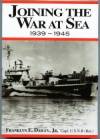
-------
.
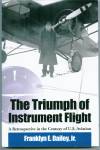
Read The Triumph of Instrument Flight
- Navy Aerial Reconnaissance
- Warships at Morocco-1942
- Aircraft Carriers for Torch
- Battle for Morocco
- Bridging World Wars
- Supply and Support
- Husky, Palermo, Messina
- Bloody Salerno
- Luftwaffe Standoff Weapons
- Aircraft of World War II-"friendlies"
- Long "slog" at Anzio
- USS West Point AP23 War Cruise-part 1
- USS West Point AP23 War Cruise-part 2
- Singapore, Fateful Stop on "Joan's Journey"
- Update West Point
- Part I, Briggs on Casablanca, Sicily
- Part II, Briggs on Anzio
U.S. aircraft in combat at Casablanca, Sicily, Salerno, Anzio & Southern France in WW II; Allies retake the Mediterranean
Copyright 2013
Ships and Aircraft of World War II(many photos from U.S. Navy WW 2 Recognition Training Slide Set)
The World War II aircraft pictured here were welcome sights to U.S. Navy sailors in the Mediterranean Theatre during the progression of assault landings that began at Casablanca in 1942 and ended at Southern France in 1944. These were all "friendlies." We look at some of them taken from Navy recognition slides.
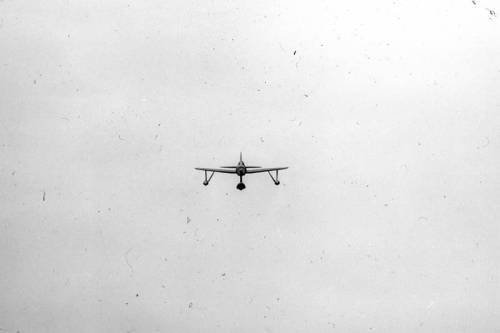
Above, the Navy OS2U most often used from battleships for Observation and Scouting duties. Built by Vought Aircraft. Those of us in the 8th Fleet making the landings at Casablanca, Sicily, Salerno, Anzio and Southern France rarely saw this aircraft. We rarely saw battleships. Light cruisers with SOC aircraft were out 'big boys.'
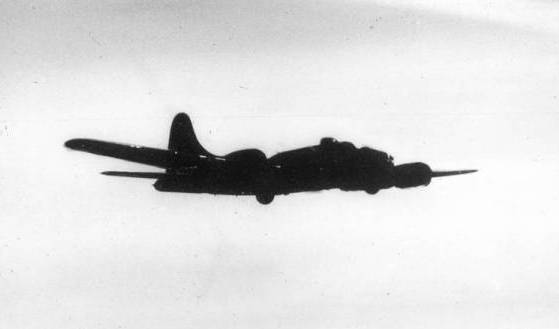
Above, the famed B-17 Flying Fortress built by Boeing. Occasionally seen by shipboard sailors as it was flying in formation heading north to a European target from a North African airfield, this aircraft was more prominently based in the UK for the preponderance of its WW II missions.
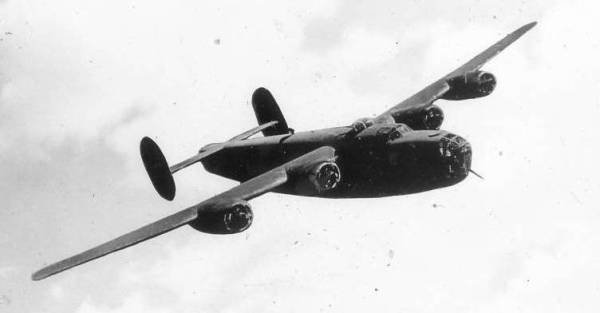
Often seen in the Mediterranean sky was the Liberator, built by Consolidated. Large formations of these headed north to such targets as the Ploesti oil fields in Rumania. As the Allies moved up the Italian Peninsula, these aircraft, with their superchargers lifting them to high altitudes, were the backbone of the heavy bombing campaign from this theatre against German assets. Eventually the Italian airfield at Foggia near Naples was captured and Allied aircraft could range further north.

Above is the Lockheed P-38 Lightning. In Mediterranean skies in WW II, this aircraft was used mostly as a fighter-bomber. One day a flight of three swept majestically west out of the Italian shoreline headed right for my ship off shore. Then, gracefully, the plane on the near quarter of the flight leader, flew right into the sea. My destroyer moved rapidly over to the point of impact and found a light green oily surface and nothing else. The pilot had undoubtedly been badly hit by AA fire during a low level bombing attack on shore, lost consciousness and relaxed his hand on the yoke as his aircraft described a graceful arc right into the water.

The aircraft above is the British Beaufighter, which our Mediterranean warships usually only saw at twilight, when this type aircraft would begin or end its patrol as a nightfighter. If the practice known to U.S. carrier pilots as CAP, for Combat Air Patrol, ever came to the Mediterranean, it came after I left in October 1944. The British had established, for operations over the cities its searchlights defended, a ZI for Zone of the Interior. In geometric terms it was an inverted cone with its apex at the ground center of the defined ZI, an airspace that "friendlies" should avoid since the anti-aircraft batteries would shoot at anything in the Zone. By 1944, most U.S. surface warships had been in an east coast Navy Yard long enough to get a Combat Information Center (CIC) installed, a space often converted from prior use. ZIs and CICs were early attempts to add the third dimension, air, to the weapon system control picture. Even with the CIC that my ship, the destroyer Edison had by the time of the invasion of Southern France, the effective meshing of target selection for main battery five inch, 40mm and 20mm guns, with lookout information, electronic aircraft Identificiaton Friend or Foe ( IFF), search radar and sonar information, and the flow of information arriving over the TBS and from the radio shack, all this was a long , long way from coordination.
The Beaufighters gave Allied ships confidence that somebody in the night sky was on their side, though I am sure that Beaufighter pilots kept their distance from all surface armament, friend or foe. Now a couple of single engine airplanes that made records in World War II, albeit on interestingly opposed fronts.

The famed P-47 Thunderbolt as it appeared in a Navy recognition slide. This plane served effectively on the western front in Europe.

U.S. Army Air Corps P-63 King Cobra viewed in a WW II U.S. Navy recognition slide.
These two aircraft, the radial-engined P-47 and the inline P-63, served as fighter bombers. The United States put several aircraft manufacturers to work in World War II to create fighter aircraft. These two made it into U.S. Army Air Corps service.
Fighter aircraft were a priority for the U.S. to face the German Messerschmidts and the Japanese Zeros. The P-38 Lightning was successful in the fighter mode especially defending German bomber raids early in the war, tho later was used as a successful low level attack bomber. The P-51 Mustang was considered the most successful fighter in US AAC service. We shall come to this plane on another page, but for readers' interest, I saw one today May 22, 2013, at Dekalb Peachtree airport near Atlanta GA. She was on display for the Commemorative Air Force.
Aircraft like the two pictured just above were pressed into fighter-bomber service. The P-63 King Cobra and its predecessor P-39 Aircobra, were adopted by the Soviets and saw much service on the eastern front in Europe. My flying book pictured at the top of this page tells how U.S. aircraft were air 'ferried' to Europe, and the seawar book, pictured just above at the top of this page, tells how U.S. aircraft were lashed to the main decks of cargo ships and transported in convoys to Britain.
But the transit of the P-63s to the Soviets is perhaps the most exciting of all ferried aircraft stories. U.S. pilots ferried King Cobras to Great Falls Montana, then up western Canada via Edmonton Alberta to Anchorage , Alaska already 2200 statute miles,and then on to Fairbanks Alaska. There, Soviet pilots took over, flew the planes across Alaska to Siberia and into Soviet service against Germany where the aircraft were used as tank destroyers (Panzers) and interdiction against low level Luftwaffe bombers.
In just the past couple of years (2010 or 2011) one P-63 was discovered upside down frozen in a Siberian lake, with pilot in the cockpit. A rare thaw exposed the outline of the aircraft. The preservation of the aircraft was remarkable.